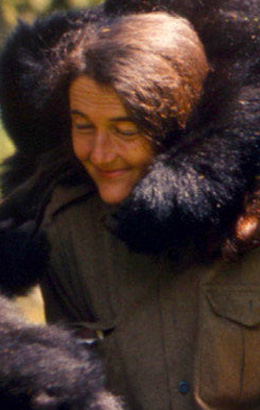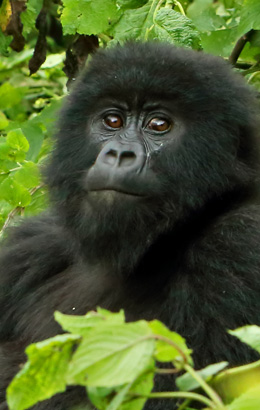Back to the forest for another gorilla census…
Only by knowing exactly how many mountain gorillas there left in the world can we tell if we are winning our conservation battle or if poaching and habitat loss are continuing to push these wonderful creatures closer to extinction. So that’s why a new census is currently being carried out in the Bwindi Impenetrable Forest in Uganda, one of the only two places on the planet where you can find mountain gorillas (the other being the Virunga Massif, which stretches across Rwanda, Uganda and DR Congo).
I was lucky enough to be invited along on the count – and let me tell you, it’s not easy! The first question most people ask is, of course, how do you count gorillas? After all, most of them are notoriously shy, especially those living outside the groups that have been habituated for tourism or research purposes. What’s more, they never stay in one place for very long, making new nests to sleep in every day. And, of course, to the untrained eye, most gorillas look very much alike! Surely you will just count the same one many times..?
But, as I learned from my time on the census, counting gorillas is a complex, scientific business. I joined a team of three of the 60 rangers currently taking part in the census and we ventured deep into the National Park. We didn’t look for the gorillas themselves, but instead for evidence of them. We searched for day and night nests, marking their locations using the latest GPS technology. We also took forensic samples from the nests, and its these that are key to getting a highly accurate figure – but also the reason why the final result won’t be published for some months.

Here’s one to add to the total! I spotted this silverback deep in the forest
These samples will be sent off to a special laboratory to be analysed and then, with thousands of different sets of DNA to work with, the researchers will be able to work out exactly how many individuals there are living in Bwindi. This way we can even include lone gorillas, usually blackbacks or silverbacks, who hide in the forest and who may never have seen a human in their lives.

It can be messy work, but it’s really important if we are to know how the gorillas are doing
I spent just a couple of days on the census, but the 60-strong team will be out in the forest for a couple of months. On some days they will be able to do day-trips into the gorilla habitat and then return home, but other times they will have to camp out, staying away from home for several days at a time. It’s a big sacrifice, but I have seen for myself just how much these men care for the gorillas they live alongside. Let’s hope their hard work and dedication is suitably rewarded and we see a good increase in gorilla numbers when the final results are published in a few months time..!















